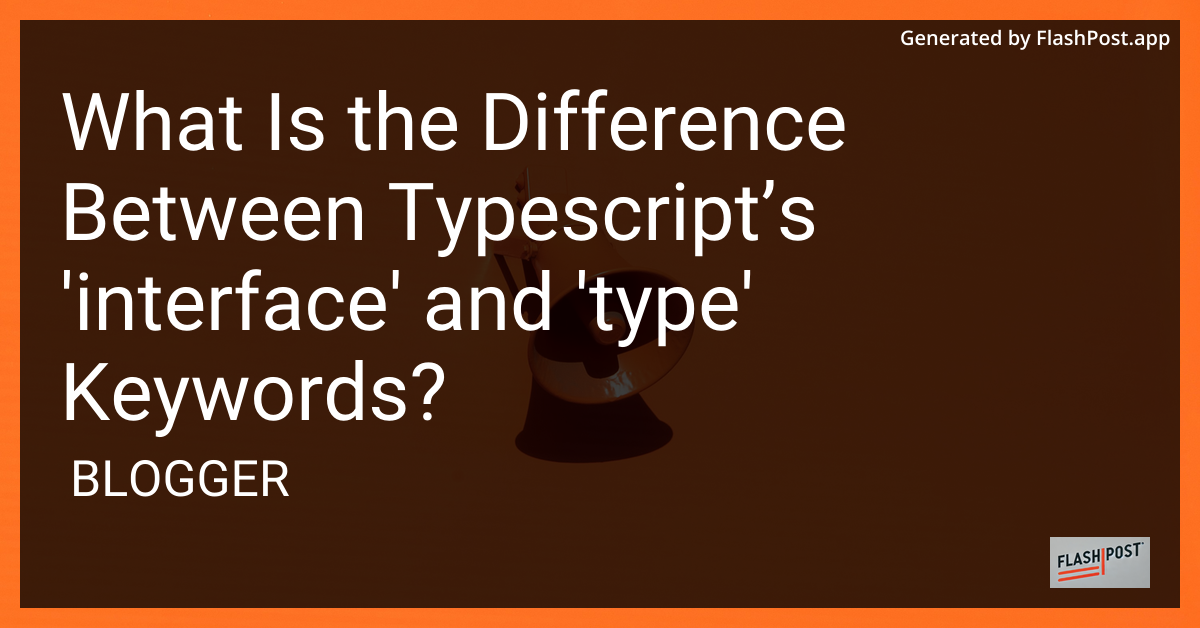What Is the Difference Between Typescript’s 'interface' and 'type' Keywords?

Understanding the Difference Between TypeScript’s interface and type Keywords
TypeScript is a robust language developed with the intent of enhancing the capabilities of JavaScript by adding static types. Two essential constructs in TypeScript that often confuse developers are interface and type. Understanding the key distinctions and the appropriate use cases for each can significantly enhance your TypeScript programming skills.
Introduction to TypeScript’s interface and type
In TypeScript, both interface and type are used to define complex types such as objects, allowing the developer to describe the shape of the data being used. They serve as contracts within your code that a defined variable, function, or class must conform to. However, each has distinct characteristics and best-fit scenarios for their use.
Defining interface
An interface in TypeScript is primarily used to represent the shape of an object. It can include properties and methods and can be extended, which means you can build upon existing interfaces to simplify development.
Example
interface User {
name: string;
age: number;
isActive: boolean;
}
One of the most potent features of interfaces is their capability to extend other interfaces. This means you can create a new interface built on the existing ones:
interface AdminUser extends User {
adminRights: string[];
}
Defining type
Type is a more versatile construct in TypeScript. It can describe a variety of shapes like primitives, union types, and tuples, aside from objects. Type is often favored for its concise and flexible syntax.
Example
type User = {
name: string;
age: number;
isActive: boolean;
};
With type, you have the ability to compose and combine different types using unions and intersections, providing a broader range of expressiveness:
type ID = number | string;
Key Differences
Extension and Implementation: Both
interfaceandtypecan be extended, butinterfaceexcels by supporting the extension of multiple interfaces which can be a crucial feature in OOP scenarios. Discover more about oop features in TypeScript.Objects vs. Union/Intersection Types: While
interfaceis strictly for defining the shape of an object,typecan define complex types, including unions and intersections. This is vital for scenarios such as determining a momentum formula in TypeScript.Declaration Merging:
interfacesupports declaration merging, where two interfaces with the same name are automatically merged.Typealiases do not support this feature.Use in Generics: Both allow the usage of generics, but certain complex types might only be possible to depict using
type.
Conclusion
Choosing between interface and type often comes down to the specific requirements of your project. Interface provides clear advantages in object-oriented programming through extensibility and declaration merging, while type offers a flexible, powerful syntax capable of describing any form of data structure including function signatures and advanced intersections or union types. Both constructs, when used correctly, can facilitate the creation of clean, scalable, and maintainable code.
Explore more on topics related to TypeScript such as fibonacci extensions calculation in TypeScript to further enhance your TypeScript expertise.
Comments
Post a Comment